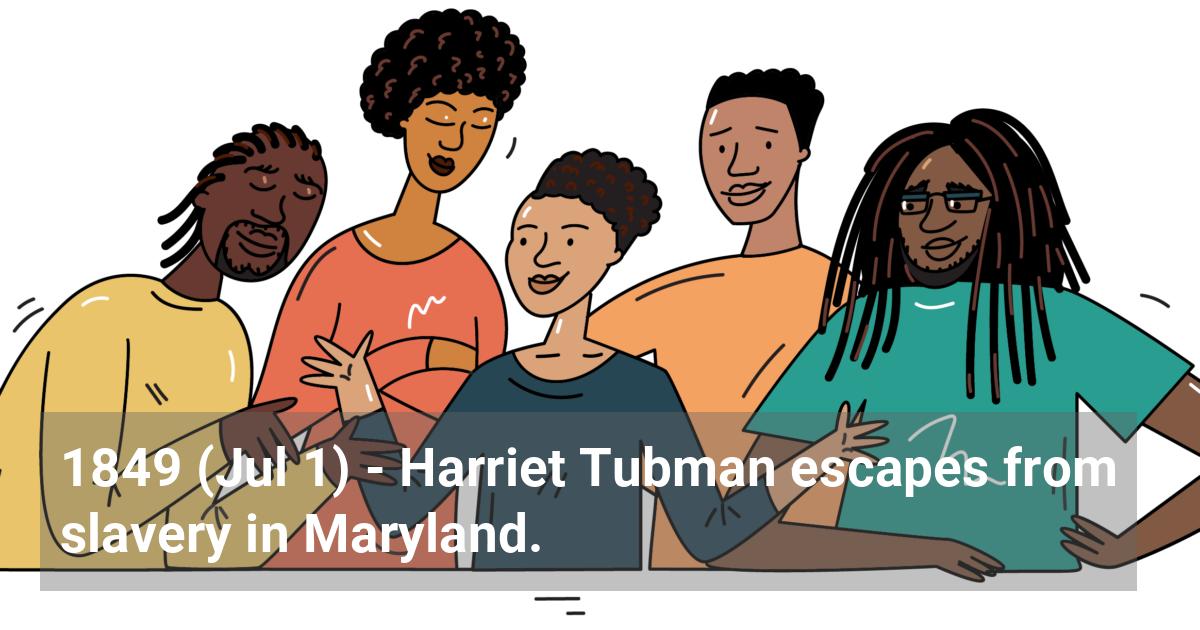Home / Full timeline / Harriet Tubman escapes from slavery in Maryland.
 Harriet Tubman escapes from slavery in Maryland.
Harriet Tubman escapes from slavery in Maryland.
1849 (Jul 1)
Harriet Tubman, the best-known Black female abolitionist, returned to Maryland and Virginia at least twenty times and is credited with freeing anywhere from about 100-300 enslaved Blacks. The daring abolitionist was born in Dorchester County, Maryland, in 1823. While working as a field hand as a young girl, she suffered a severe head injury by a weight that an enraged overseer had thrown at another enslaved Black. The damage from that blow caused Tubman to suffer from "sleeping seizures" for the rest of her life. In 1844, she married a free Black, John Tubman, but remained enslaved. In 1849, her enslaver died, and rumors emerged that those he enslaved were to be sold into the deep South. Tubman, along with two of her brothers, escaped. Fearing capture and punishment or death, the brothers returned to the plantation, but Tubman, using the North Star for directions, marched on until she reached Philadelphia. In 1850, Tubman returned to Maryland for a sister and a brother, and in the following year she led a party of eleven Blacks from the South into Canada, leaving behind her husband, who had married another woman. In 1857, Tubman made one of her last trips into Maryland, rescuing her parents and three additional brothers and sisters. The family then settled in Auburn, New York. The family home, purchased from anti-slavery senator William H. Seward, was later turned into a home for elderly and indigent Black Americans. After serving in the Civil War as a nurse and a spy, Tubman devoted all of her energy and earnings to this home during the twilight of her life. Tubman, often called "the Moses of her people," died in Auburn in 1913.
References:
- • Hornsby, Alton. Chronology of African-American History: Significant Events and People from 1619 to the Present. Detroit: Gale Research, 1995.
